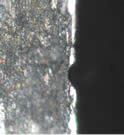New Lasers Are Mainstreaming Micro-Machining
Technical demands from the electronic, medical, aerospace and other industries are pushing the boundaries of micro-machining to smaller and more precise tolerances. The application of laser technology is pacing the demands from industry for smaller geometries and increasingly tighter specifications.
Share





Technical demands from the electronic, medical, aerospace and other industries are pushing the boundaries of micro-machining to smaller and more precise tolerances. The application of laser technology is pacing the demands from industry for smaller geometries and increasingly tighter specifications.
An example of this can be found in machining circuit paths for electronics that must be 10 microns with a tolerance of 1 micron. The process must be performed quickly, and with depth of cut control that does not affect the substrate beneath the circuit path.
A newly introduced short pulse laser is finding acceptance machining fine features in a variety of materials. The laser is called Staccato and is made by RPMC Lasers in O'Fallen, Missouri.
For micro-machining applications, the fundamental wavelength of this laser unit is 1 micron. It delivers 13-picosecond long, diffraction limited pulses at a peak power rating as high as 38 megawatts, according to the company, which is far higher than most conventional industrial lasers. A single pulse from the laser removes materials as thin as 1 nanometer and as thick as 1 micron, depending on the material being cut.
A technological advance of this new laser is its ability to generate peak power at 100 kHz—that's 100,000 pulses per second. This translates into a significant improvement in the amount of material that can be removed.
Owing to its short pulse and rapid frequency, the "heat affected zone" usually associated with longer frequency laser pulses is reduced or eliminated. At the ultra-high frequency of the Staccato, material is blasted from the cutting zone and does not have time to recast on the workpiece surface. The result is a smooth and accurate cut at relatively high production rates.
This new laser system is designed for use on the factory floor. It is not a laboratory machine. It works well in a manufacturing, shopfloor environment.
The laser is designed to be an augment to conventional laser machining. It is not designed to replace conventional lasers but, rather, to offer manufacturers a tool to make cuts that are currently beyond conventional laser technology.
The Staccato short pulse laser is a niche tool for micro-machining. And micro-machining is a growing niche in manufacturing.
Related Content
-
Inside the Premium Machine Shop Making Fasteners
AMPG can’t help but take risks — its management doesn’t know how to run machines. But these risks have enabled it to become a runaway success in its market.
-
Orthopedic Event Discusses Manufacturing Strategies
At the seminar, representatives from multiple companies discussed strategies for making orthopedic devices accurately and efficiently.
-
How to Determine the Currently Active Work Offset Number
Determining the currently active work offset number is practical when the program zero point is changing between workpieces in a production run.























.jpg;maxWidth=300;quality=90)


